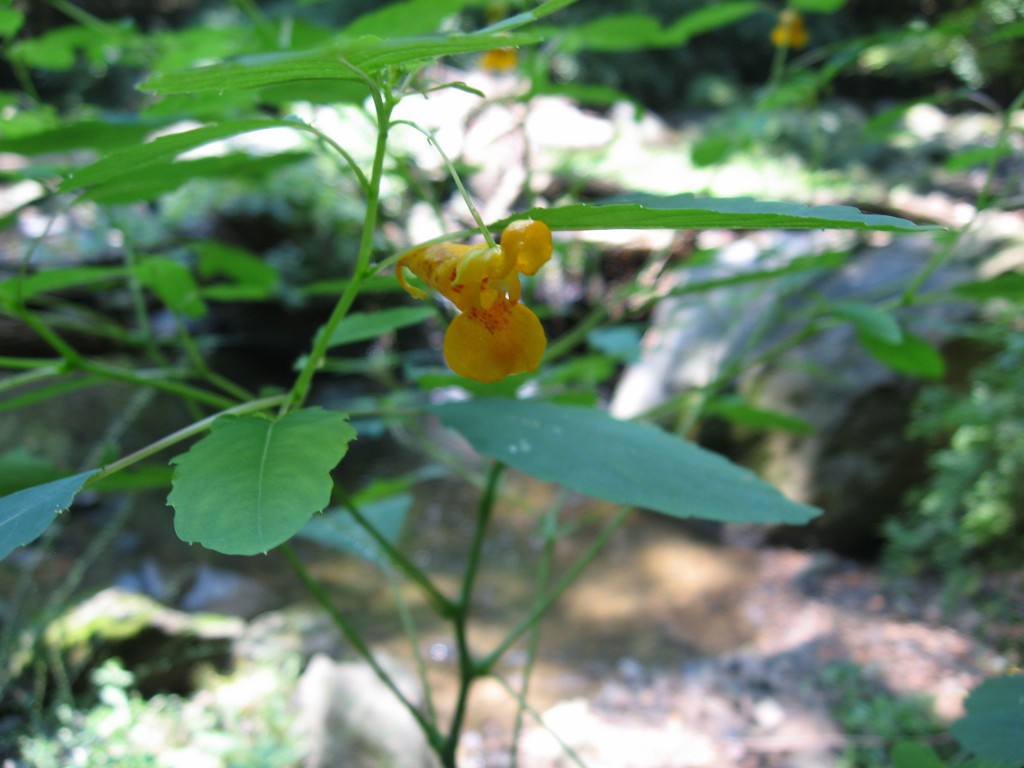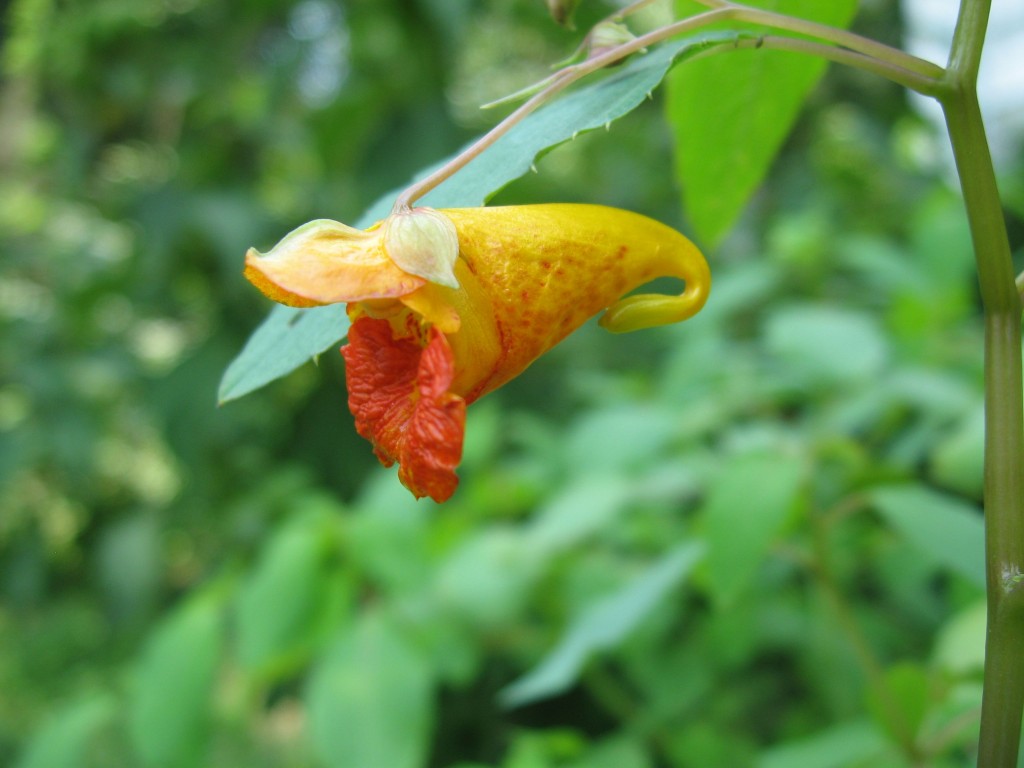
Impatiens capensis
A jewel of the forest hangs like a shiny pendent from a delicate plant growing out of a rocky crevice on a steep streambank. Â A few years ago, this was a common bloomer along Indian Creek. However it has been increasingly heavily browsed, rarely making it to flower and its seed bank is being depleted. Â This annual plant requires flowering and seed production for survival. Â In some areas, Japanese knotweed has also replaced its habitat. Â It likes to grow in moist areas in a decent amount of shade.

This is in our garden! Â This specimen was planted from seed! Â We waited all summer for this to bloom, and we were worried it would not make it, being that it is a sunny yard. But it grew and grew next to our Hibiscus moschuetos, which likes bright sunlight. Â We planted the jewelweed right where the drainpipe ends, so it gets plenty of moisture.
As of this morning, there is just this one flower, which is starting to get torn up by the bees and possibly the hummingbirds. However a new flower is starting to unfold from a tightly wrapped green sphere about one-quarter of an inch in diameter. Tomorrow, a fresh orange flower is expected. Â Will our precious jewelweed make it to seed?



Thank you Sean for sharing your beautiful photos. I remember when jewelweed used to be abundant in the park, especially near the creek where we cross to go to the Indian Rock side.
What can we do to slow down the depletion?
~Isabelle (currently in Europe)
Your welcome Isabelle. I was just in that area crossing the creek yesterday, and all I saw was Japanese Knotweed. I was looking for Jewelweed, I remember seeing a few last year there. There is some to be found along the steep rocky slopes. Hopefully these individual surviving plants will keep alive the genetic pool of the local population. -Sean